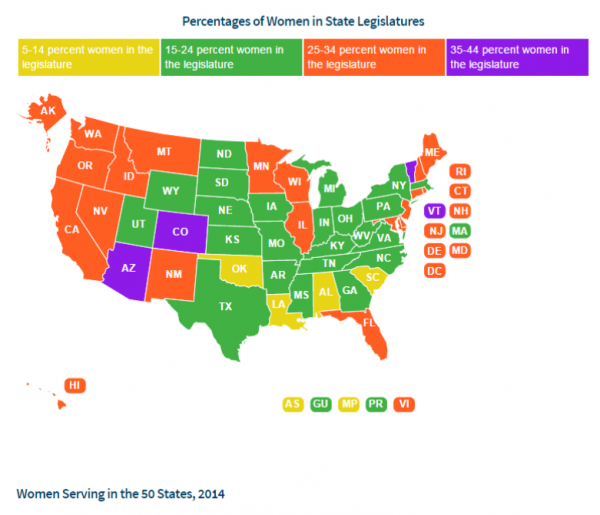Connecticut Ranks #12 in Child Homelessness Risk and Response, National Numbers at All-Time High
/A new report finds 2.5 million children experienced homelessness in the United States in 2013, representing one in every 30 children in the country - an historic high in the number of homeless children.
The report by Homeless Children America at the American Institutes for Research, called America’s Youngest Outcasts, documents the number of homeless children nationally and in every state, their well-being, their risk for child homelessness, and state level planning and policy efforts. It used the most recent U.S. Department of Education count of homeless children in U.S. public schools, which was released in September, and on 2013 U.S. Census data.
From 2012 to 2013, the number of children experiencing homelessness annually in the U.S. increased by 8 percent nationally. The number of homeless children also increased in 31 states and the District of Columbia and in 13 of those states, it increased by 10 percent or more.
Connecticut’s child homeless number was virtually unchanged. The report examined childhood homelessness on a state-by-state level, ranking the states from 1 (best) to 50 (worst). Connecticut’s overall ranking was #12.
The top 11 states were Minnesota, Nebraska, Massachusetts, Iowa, New Jersey, Vermont, New Hampshire, Pennsylvania, Hawaii, Maine and Maryland.
For Connecticut, the report shows there were 5,508 homeless children during the 2012-2013 school year. That is virtually identical - down by four children - from the 2011-2012 data, and nearly 200 less children than in 2010-11. Connecticut, based on those numbers, ranked #1 in the nation 2012-2013 in the “extent of child homeles sness” category.
sness” category.
The state ranked #17 in policy and planning, based on factors including the number of emergency and transitional housing units for homeless families, and state planning efforts.
The 130-page report, which will be presented to Congress, at a briefing scheduled for February 10, listed six causes of child homelessness nationwide:
- the nation’s high poverty rate
- lack of affordable housing across the nation
- continuing impacts of the Great Recession
- racial disparities

- challenges of single parenting
- the ways traumatic experiences, especially domestic violence, pave the way toward and prolong homelessness
“Without decisive action now, the federal goal of ending child homelessness by 2020 will soon be out of reach,” said Dr. Carmel DeCandia, Director of the Boston-based National Center on Family Homelessness at American Institutes for Research. “Living in shelters, neighbors’ basements, cars, campgrounds, and worse—homeless children are the most invisible and neglected individuals in our society.”
According to the report, research shows that homeless children are hungry and sick more often. They wonder if they will have a roof over their heads at night and what will happen to their families. Many homeless children struggle in school, missing days, repeating grades, and drop out entirely.
Up to 25% of homeless pre-school children have mental health problems requiring clinical evaluation; this increases to 40% among homeless school-age children. Homelessness, especially in young children, may also lead to changes in the brain, which can interfere with learning, emotional self-regulation, cognitive skills and social relationships.
The report also recommends a series of “effective responses” to child homelessness:
- Safe, affordable housing.
- Comprehensive needs assessments of all family members.
- Family-oriented services that incorporate trauma-informed care.
- Identification, prevention, and treatment of major depression in mothers.
- Parenting supports for mothers.
- Education and employment opportunities for parents.
- Further research to identify evidence-based programs and services for children and families.
The National Center on Family Homelessness, founded in 1988, is described as the nation’s foremost authority on child and family homelessness, using research and evidence-based approaches to prevent and end family homelessness.







 Making the grade are Bridgeport, Hartford, and New Haven. Their respective round one opponents make the Connecticut cities strong underdogs in need of a sizable population surge. Bridgeport goes up against San Francisco, Hartford faces Baltimore, and New Haven is up against Portland. (No, not Portland, Connecticut.)
Making the grade are Bridgeport, Hartford, and New Haven. Their respective round one opponents make the Connecticut cities strong underdogs in need of a sizable population surge. Bridgeport goes up against San Francisco, Hartford faces Baltimore, and New Haven is up against Portland. (No, not Portland, Connecticut.) one of two versions of the game, geographic level: metro areas or states. Then they click on the name of the city in each match-up that you think has the larger population. Green shows a correct answer, red indicates an incorrect answer. Players are urged to “see how close you can come to a perfect score of 63” and then asked to “mouse-over results to view the most current population estimates for each pair.”
one of two versions of the game, geographic level: metro areas or states. Then they click on the name of the city in each match-up that you think has the larger population. Green shows a correct answer, red indicates an incorrect answer. Players are urged to “see how close you can come to a perfect score of 63” and then asked to “mouse-over results to view the most current population estimates for each pair.”






 The report also indicated that more than 80% of litigants appear without lawyers in matters as important as evictions, mortgage foreclosures, child custody and child support proceedings, and debt collection cases. “Making courts user-friendly for these self-represented litigants is imperative if we are to keep the promise of equal justice for all,” the report indicated. In comparing the 50 states’ systems for self-represented litigants, Connecticut ranked #9. The top states were Hawaii, California, Delaware, Arizona, Iowa, Indiana, Washington, Massachusetts and Connecticut.
The report also indicated that more than 80% of litigants appear without lawyers in matters as important as evictions, mortgage foreclosures, child custody and child support proceedings, and debt collection cases. “Making courts user-friendly for these self-represented litigants is imperative if we are to keep the promise of equal justice for all,” the report indicated. In comparing the 50 states’ systems for self-represented litigants, Connecticut ranked #9. The top states were Hawaii, California, Delaware, Arizona, Iowa, Indiana, Washington, Massachusetts and Connecticut.

 ld University at #396. Outside the top 400 from Connecticut were Wesleyan University, Yale University, Quinnipiac University and Trinity College.
ld University at #396. Outside the top 400 from Connecticut were Wesleyan University, Yale University, Quinnipiac University and Trinity College. ity in New Jersey, Florida Agricultural and Mechanical University, Florida International University, and six institutions in California, including California State Polytechnic University, the University of California and Cal State.
ity in New Jersey, Florida Agricultural and Mechanical University, Florida International University, and six institutions in California, including California State Polytechnic University, the University of California and Cal State.
 Republicans. The House Speaker, House Majority Leader, Senate President Pro Tempore Senate Majority Leader, and Senate Republican Leader for the 2015 session are men, as was true in the previous legislative session. Connecticut has seen a woman Speaker of t
Republicans. The House Speaker, House Majority Leader, Senate President Pro Tempore Senate Majority Leader, and Senate Republican Leader for the 2015 session are men, as was true in the previous legislative session. Connecticut has seen a woman Speaker of t he House, but there has not been a woman selected to serve as Senate President Pro Tempore or Majority Leader.
he House, but there has not been a woman selected to serve as Senate President Pro Tempore or Majority Leader.
 t households unable to afford all of life’s basic necessities far exceeds the official federal poverty statistics. United Way calls this newly revealed demographic ALICE, an acronym for Asset Limited, Income Constrained, Employed.
t households unable to afford all of life’s basic necessities far exceeds the official federal poverty statistics. United Way calls this newly revealed demographic ALICE, an acronym for Asset Limited, Income Constrained, Employed. an double the official U.S. poverty level.
an double the official U.S. poverty level.






























